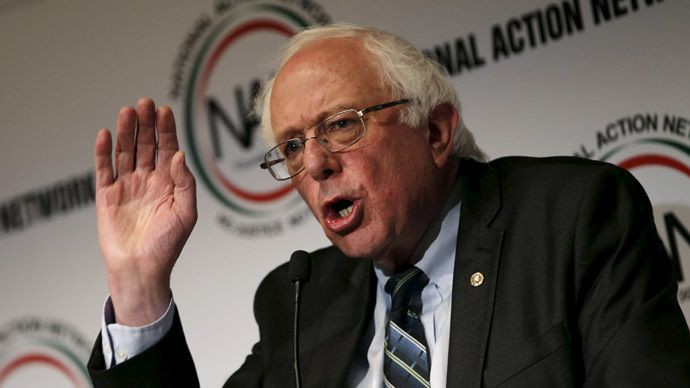Cord-Cutters Are Not All Young Hipsters; More Low-Income Families Are Getting Priced Out Of Cable TV

Utter the phrase “cord-cutter” to the average person and the image of bearded, binge-watching young urbanites will instantly spring to mind, but the full picture of people without a traditional pay-TV subscription is a bit more complex. According to data from Nielsen Media, cable cord-cutting is being driven not just by younger consumers, but also by low-income households, and often households where at least one child is present.
The trend becomes evident upon examination of “churn rate” -- that is, the percentage of subscribers who cancel their cable or satellite service over a given period of time -- which is significantly higher among U.S. households making less than $20,000 a year. In the last 12 months, such households have been canceling their pay-TV subscriptions at a rate of about 1.75 percent, compared to 0.75 percent for the viewing population as a whole, according to BMO Capital Markets, which parsed the Nielsen data in a recent research note. Similarly, households with children present cancel their pay-TV subscriptions at nearly twice the rate of their childless counterparts.
Daniel Salmon, BMO’s media and Internet analyst, said about 3 percent to 4 percent of U.S. households are broadband-only and “contrary to the popular myth that these are largely young, urban professionals -- they included a high proportion from rural households.”
Salmon gleaned the insight from a question-and-answer session with Glenn Enoch, Nielsen’s senior vice president of audience insights, who recently joined the company from ESPN. The data came from a series of observations Nielsen made over three-month intervals, unified and averaged from June 2014 through May 2015.

Feeling The Pinch
The revelation that low-income households are more likely to cancel their cable subscriptions lends credence to the stance among some consumer-advocacy groups that cable bills are becoming increasingly burdensome for many consumers. The average monthly cable bill has risen about $2 to $3 a year for the past two decades and is nearly triple what it was in 1995, according to figures from the Federal Communications Commission. The rise in rates has run parallel to both industry consolidation and the explosion of high-speed Internet.
“We see across a lot of communications markets that people who are low income are much less likely to do without one or the other, so I don’t think it’s that surprising, particularly as cable bills keep rising,” said John Bergmayer, a senior staff attorney for Public Knowledge in Washington. “A lot of new content is available online, so more people see it as possible to switch.”
The effect of higher cable bills on consumers has gotten the attention of lawmakers. Last week four U.S. senators, led by Bernie Sanders of Vermont, sent a letter to the FCC asking the agency to investigate prices charged by pay-TV and broadband providers.
“Many Americans have very few, if any, options when it comes to choosing their local cable and Internet providers,” Sanders and his colleagues wrote. “And, as the telecommunications industry has become increasingly concentrated, this lack of choice has resulted in huge price increases and often poor service for consumers.”
Media analyst Craig Moffett first drew attention to the issue two years ago with an extensive report on cord-cutting in which he asserted lower-income consumers are getting “priced out of the market” by rising rates, as Variety reported at the time.
Cheap Entertainment No More
The trend signifies a habitual shift of sorts from the 1980s and ‘90s, when cable television was seen as a more affordable alternative to, say, going out to a movie, particularly for large families. Today, those same families have increasing on-demand and streaming options while mobile devices and smart TVs make monitoring children’s viewing habits easier than ever. For many, letting their children watch a Pixar movie on an iPad makes more sense than sitting them down unsupervised in front of Nickelodeon.
“It’s more control for the parent, which is always nice,” Bergmayer said. “And cable TV can be horrendous for children’s programming.”
There is some good news for the industry, however. While low-income viewers tend to cancel their subscriptions at a higher rate, they’re also more likely to sign up at a higher rate, or “churn back into the bundle,” as Salmon puts it. That suggests households stretching their dollars may come back into the fold at a certain point, when they’re doing better financially.
The bad news is, at least for cable companies, the cord-cutting trend is only expected to continue, albeit at a slower pace. In a report released Monday, Moffett estimated the top cable providers -- including Comcast Corp., Time Warner Cable Inc. and Charter Communications -- will lose a combined 355,000 pay-TV subscribers in the second quarter of 2015, compared with 533,000 in the second quarter of 2014. The top two satellite companies, Dish Network Corp. and DirecTV, are expected to lose 154,000 subscribers.
For naysayers who still doubt the trend is real, the writing is increasingly on the walls. “The second quarter earnings season will be put-up or shut-up time for the cord-cutting thesis,” Moffett wrote.
Christopher Zara is a senior writer who covers media and culture. News tips? Email me. Follow me on Twitter @christopherzara.
© Copyright IBTimes 2024. All rights reserved.





















